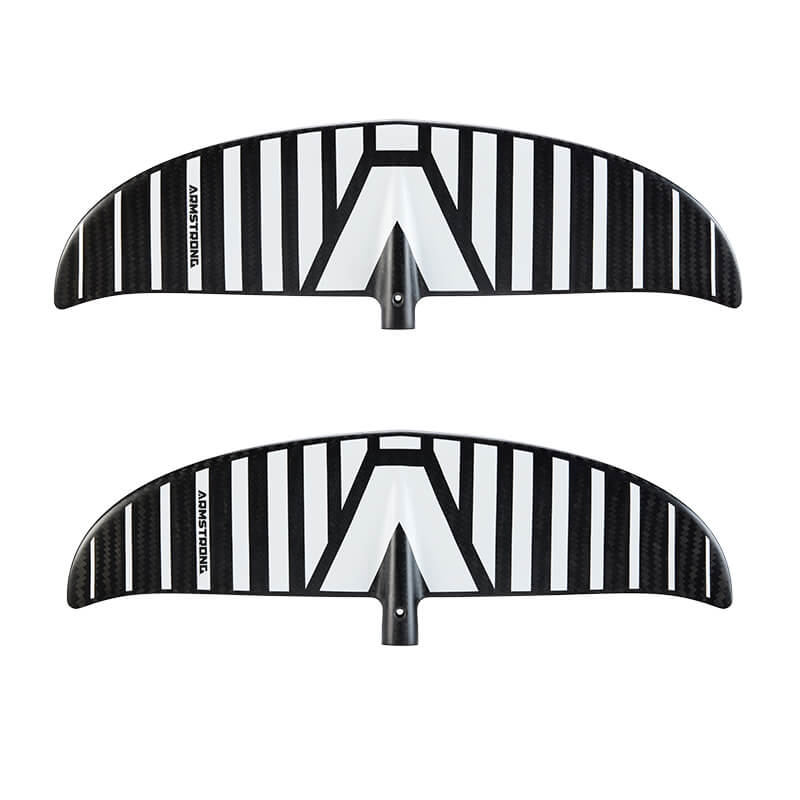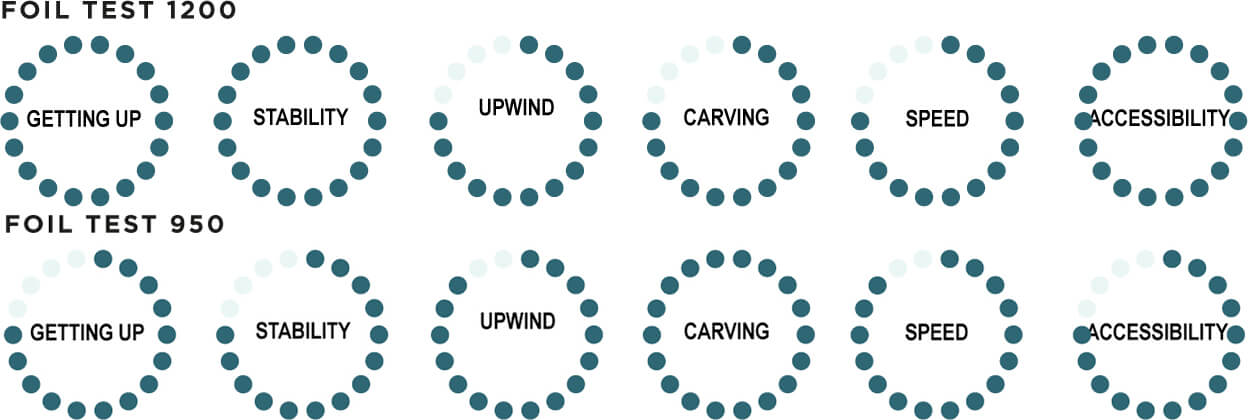When you purchase gear through links on our site, we may earn a small commission. Here’s why you can trust our tests and our affiliate partner.

It’s a mark of how far foiling has developed in the last four years, when popular tech focused brands such as Armstrong start revisiting their first release beginner-orientated CF range for a comprehensive second iteration tune up. Armstong’s ingenious modular A+ system has been in place for over a year now with elegant drag-free connection points with the integrated fuse, and all M6 titanium fixings keeping things super tight, corrosion free and lightweight.
As standard in its foil set package the CF V2 system comes with a 700mm titanium fuse, 100mm longer than the standard, and a CF300 V2 tail. This revised tail is quite a carbon sculpture and has a lot of curvature across its span, with a deep anhedral dip in the center and an opposite dihedral flick into the tips. Everything comes in well-tailored protective storage bags which in our experience stand up to tough day-to-day use. For kite use, we’d recommend the 85cm mast which offers a decent degree of stiffness to weight ratio.
For the average weight human learning to kite foil, the 1200 is going to be a go-to size for those first few steps. Its gentle lift and more gradual stall characteristics are going to make life as easy as possible. It enables time and control to get your board planing on the surface comfortably without any porpoise, allowing you to concentrate on body and kite position. It initiates take off gently and obediently. The longer 700mm fuselage and immaculately well behaved CF300 V2 tail enable reassuring stability in all axis, particularly the all-important pitch. This enables you to be a little inaccurate with your foot placement and rescue the situation, with less time swimming and more time foiling. For kiting the 1200 is extremely smooth and predictable throughout its speed range, which has a wide sweet spot of usability for its size. From a practical perspective, the edges of the foil are quite rounded. There’s nothing sharp, it’s as body friendly as a foil with this much range performance gets, adding a modicum of safety and practicality. Through your maneuvers, it’s noticeable how well balanced the system is when it’s unweighted; it just seems to carry on in autopilot, making your foot switches a cinch.
The CF950 V2 provides an entertaining and sportive ride, boasting a significant step up in maneuverability and speed. It’s an ultimate example of a playful freeride kitefoil which is going to supercharge your progression through maneuvers, and performs admirably in waves with snappy, easy-to-initiate yaw turns. For more advanced riders, we found it best to tune it up a little with an HS232 or HA195 tail, and it benefitted from the short 600mm fuselage. It feels smooth, enthusiastic and fast, without being overly technical to ride and carries over the smooth take off and stall characteristics of its bigger brother. This allows you to access some super short radius turns with the support of the kite. If you’re the sort of rider that enjoys jumping, the low swing weight is of massive advantage.
It’s also worth noting that the CF system we received was completely silent out of the box. No irritating flute noises or vibrations to report here. We found the competitive light weight of the system also meant tasks like carrying your board are simply easier. What we also need to stress is the complete cross compatibility of the range. Any sizes can be spiced up with the HS232 or HA195 tail wings and shorter fuses, which builds some serious potential longevity into the CF range.
Advanced riders shouldn’t write off the CF system, particularly for difficult conditions, aerated water, current and on/off wind conditions. The level of support through lulls or turbulence and innate stability could literally make or break the session when things are more on the unpredictable side. The truth of the matter is you’re going to be flying more and learning more. The take home for me was the elegance in the system; it’s a far cry from a clunky beginner foil with a limited range and rides in such a smooth and composed manner. For a (fairly) advanced freeride kitefoiler, revisiting a more moderately designed wing after months of high-aspect testing was enlightening, it reminds you what you actually require from a foil, particularly in less-than-ideal water and wind conditions.
The new CF V2 range is the system most aspiring kite foilers should probably be using. In 1200 it provides an ultra-stable entry point to foiling without the hinderance in top end that beginner-focused foils often suffer from, and the 950 is so delightfully entertaining and easy to ride, everyone should try it regardless of their level. The crossover into other foiling sports the Armstrong system enables will also be a big benefit for anyone thinking of dabbling with wing foiling or surf foiling.
